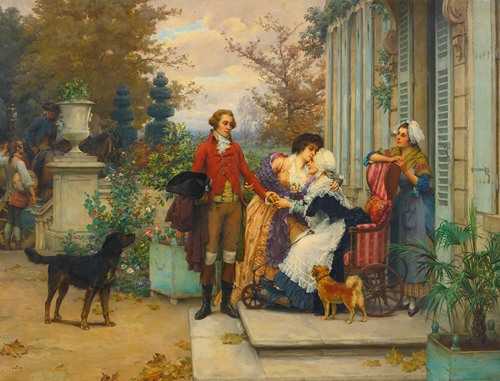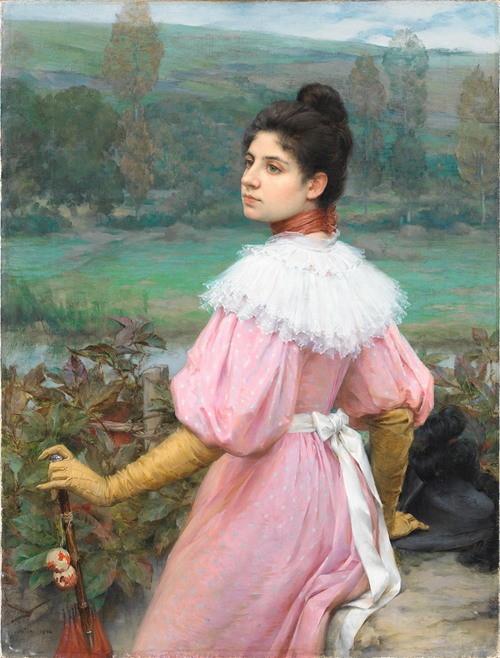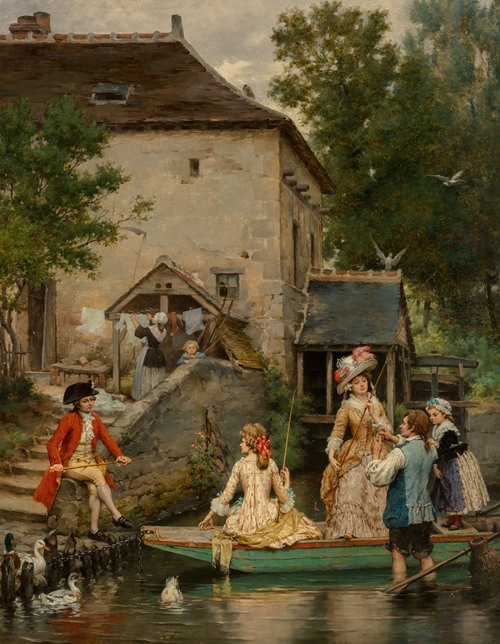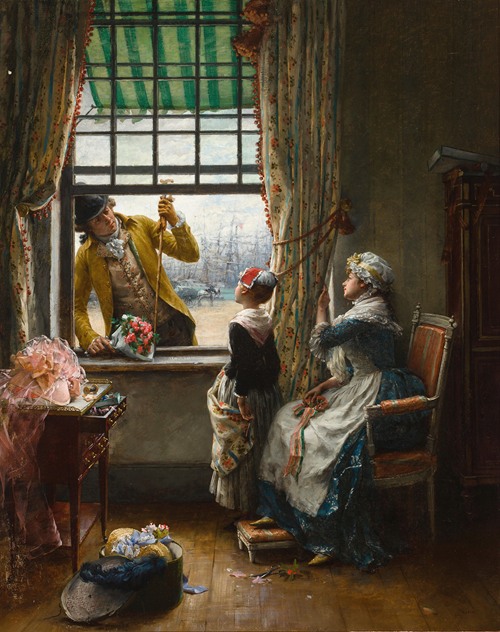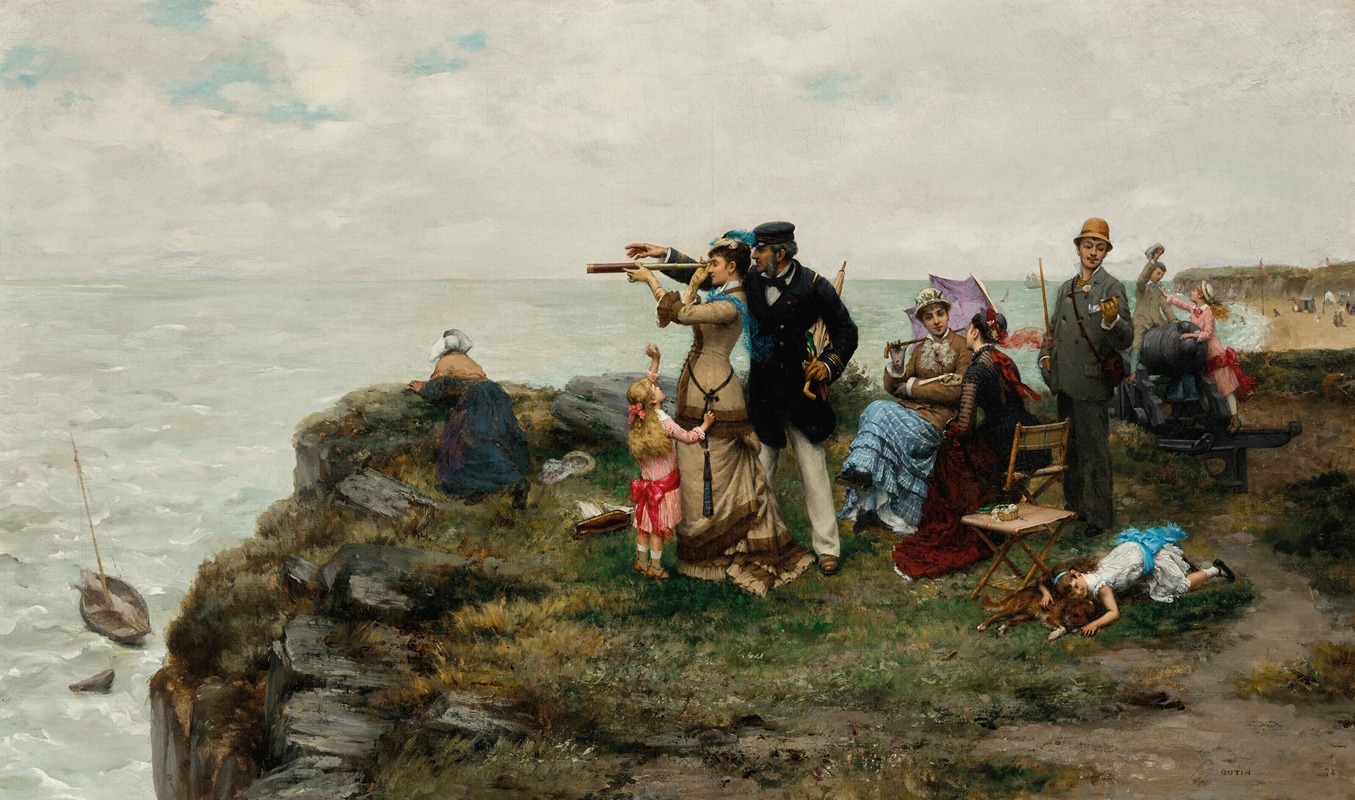
Pierre Outin's father is a wealthy trader that does not approve his son's taste for art and drawing. Outin's inclination for art begins at the Moulins high school where he learns drawing. His father wants him "back on track" and send him working in England. He is still under 18 at his return in Paris and is soon hired in a silk trade, to his father's satisfaction.
Outin gets emancipated in 1861 and decides to quit his job. Thanks to family friend sculptor Charles Joseph Lecointe, the young man is accepted at the Cabanel's studio. Outin turns out to be a very gifted pupil, and he wins the competition first prize at the Fine Art School in 1863.
From 1868 he suggest his first oil work to the Salon of French Art. His first paintings soon indicate his taste for genre scenes with historical connotation. From this moment, he becomes a Salon's regular.
The young artist stays a long period of time in Algeria in 1874. Outin is mesmerized by the African land, its cities colours, its luminosity spreading all over the streets and the oriental clothes. The surroundings are a change of scene for Outin and this strongly influences his work even after his return: we find a palette with richer and lighter shades.
Like many artists of his generation, he frequented the Nouvelle Athènes café and associates there with Manet, Pissaro and Goeneutte. In the context of the Paris Siege and the Commune, Outin settles in Auvers sur Oise with some of his friends. While being there, he paints the portrait of his painter friend Eugène Murer.
During the 1880 Salon his painting "Autumn Race" is, according to art critic Maurice du Seigneur the "the work that moist attracted visitors". From then on, the artist walks off with medals and mentions until his famous and unrivalled painting "The Battle of Quiberon Bay" in 1889. He wins the same year the Honorable mention for his "Filial Piety". Most of his works are purchased during his lifetime by art dealers Goupil and Valadon as well as English, American and German dealers.
The painter's favourite themes are historical scenes, romantic genre scenes and a couple of orientalist works. The later paintings are directly stemmed from his long stay in Algeria. His orientalist works are gracious and elegant, and one can find the entire talent of Outin as a draughtsman and colourist. His rich and subtle palette brilliantly brings out the warm atmosphere of Orient as well as the subjects's clothes and cities architecture.
